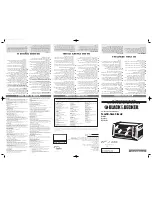
11
Diagram 1 water-side resistance
2.4.8 Water-side resistance (pressure loss)
Pressure loss (mbar)
Flow rate (m
3
/h)
LWP 180 – 500
For the Installer
With domestic water supply plants, a heat dissipation of the smallest possible boiler output must be
assured even if there is a power failure! Failure to comply with this requirement can result in a ther-
mal overload of the boiler components and invalidation of the warranty.
Technical data of the thermal safety device:
Minimum connection pressure: 2 bar
Maximum operating pressure: 6 bar
Connection dimension:
1/2” external screw thread
2.4.6 Domestic water (bringing the hot water tank up to temperature in
summer)
There may still be fuel in the boiler after the hot water tank has been brought up to temperature. As a result,
measures must be taken to dissipate the surplus energy – see section 2.4.4 Heating circuits; Minimum heat con-
sumption.
2.4.7 Thermal safety device (heat exchanger)
The thermal safety device is used for protection against overheating if the circulation is interrupted (e.g. power
failure) and is not allowed to be used for domestic water heating. See section 2.7 regarding installation of the
thermal process safeguard.
b) The pipe lines and heating appliances should be thoroughly rinsed before the boiler is connected.
c) To protect the boiler from contamination from the heating system,
installation of a dirt trap
is required in old or
existing systems (mesh size 0.5 mm) with maintenance cocks installed in the return line.
d) If oxygen diffusion or sludge build-up cannot be prevented, the system must be segregated by means of a
heat exchanger.
e) If antifreeze is used, a
minimum volume of 20 % antifreeze
is required, otherwise corrosion prevention is
not guaranteed.












































